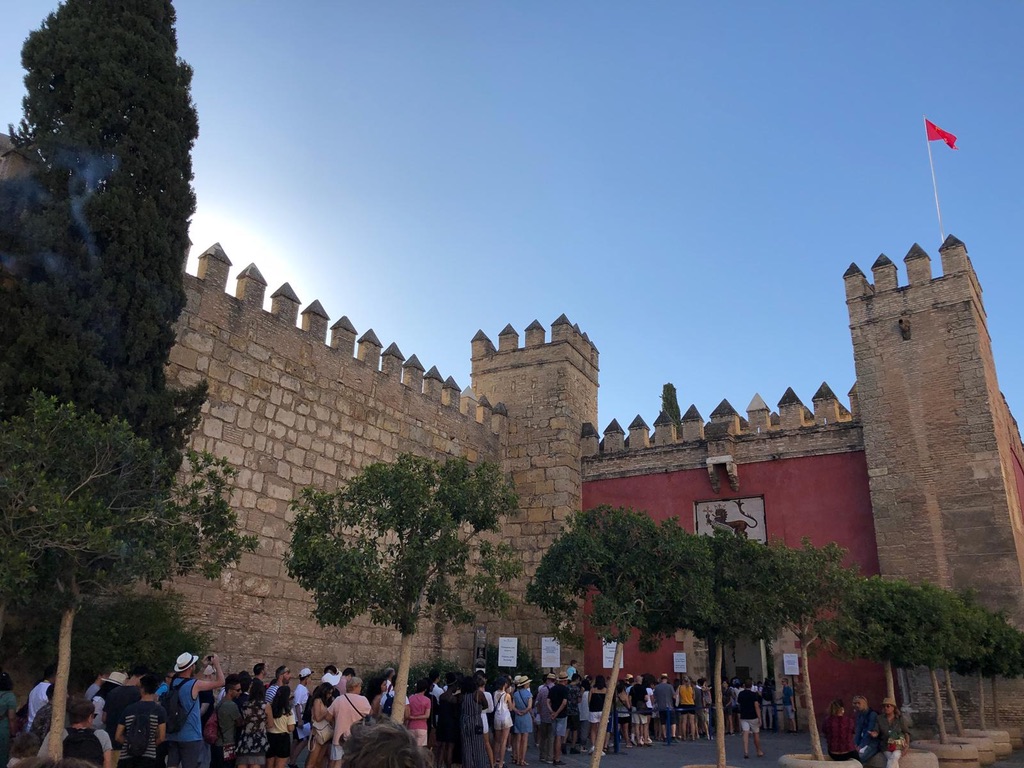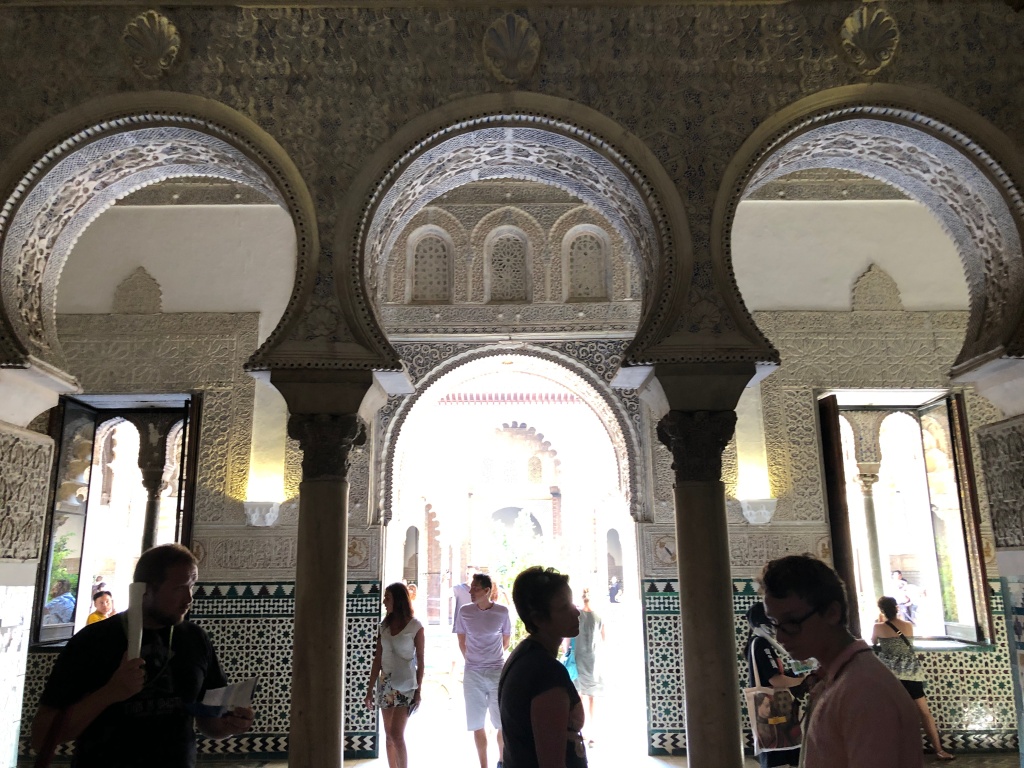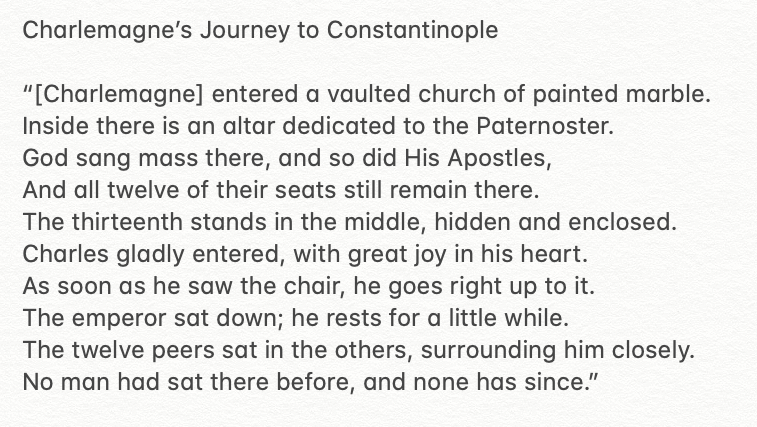What do you imagine when someone mentions an “Islamic palace” to you? Do you think of a royal palace from Disney’s Aladdin or do you think about more realistic examples that you saw in a documentary about travelling? This post will try to assess how European Crusaders understood and perceived of Islamic palaces through the medium of contemporary popular poems, also known as romances.


Think like a Historian:
Can a historian use popular culture (i.e. things that are popular within a culture) to derive any conclusions about a society that they are studying? Can you fine both pros and cons for such an approach?
What were the Crusades and who were the Crusaders?
The Crusades, broadly speaking, were a series of socio-political conflicts that spanned from 1096 and 1271. Historians argue that there were several crusades, with the first few focusing on reaching Jerusalem and the latter ones emphasising the need to break-up Islamic rule on the Iberian Peninsula. These conflicts were often framed by figures in power as having a religious angle, which focused on Christianity being “suppressed” by Islam and therefore the latter requiring protection. Consequently, the Crusades were a wide-ranging series of socio-political conflicts that took place in Europe and the Middle East.
The Crusaders were the individuals involved in the Crusades. These individuals often came from all parts of Europe. They were usually various figures in power, such as rulers, and their subordinates, knights. The motives of such individuals was often highly complex and usually linked to wider geo-political and geo-economic implications as well as some personal ones. However, to say that these groups only consisted of knights in shining armours and powerful kings is an extremely simplistic explanation of who the Crusaders were. Indeed, the Crusaders were not a monolith group of people. There were also individuals of lower social standing, who usually joined the crusading groups to earn some income or to gain social prominence. Consequently, the Crusaders were not a unanimously agreeing group of people and came from differing socio-cultural backgrounds.
Think like a Historian:
Can people from the same socio-cultural group have differing ideas what their culture is? Can you give any examples?
Islamic Palaces as Described in Mediaeval Romances
When assessing how the Crusaders perceived and understood Islamic palaces a historian should look at the scope of possible evidence. In the case of this post we will only be looking at two romances that involve a narrative centred around royal Islamic palace. The sources that will be assessed are: The Song of Roland and Charlemagne’s Journey To Jerusalem and Constantinople.
Both texts seem to frame the Islamic palace as a place where some form of negotiation takes place. Such negotiations are often centred around the formation of political interactions. For example, In Charlemagne’s Journey the group of Franks is permitted to dine and live in King Hugo’s palace whilst residing in Constantinople as part of what seems to be an unexpectant diplomatic visit. This suggests that the Islamic palaces were seen in a positive light as long as the interactions involved the Europeans. Indeed, narratives that did not involve the presence of the Europeans were probably seen as potentially dangerous and subversive to political power. In The Song of Roland, for instance, the character of the Emir strikes a profitable alliance with the King of Marseille who gives him “all of [his] lands and Saragossa and all the land that appertains thereto”, therefore providing the latter with sufficient resources to fight against Charlemagne. Such narrative suggests that the palaces served as the means to frame the environment of the characters. As a result, palaces seem to be used as the means to frame some key sections of the overall narrative and thus was probably should be understood as a symbol of political importance for contemporaneous readers or listeners.

Both texts appear to frame the Islamic palaces as highly exotic and rich places. There are numerous associations and mentions of “opulent” surroundings and “gold” and “silver” in both texts when the narrative is centred around the palace. This is most clear in Charlemagne’s Journey as the narrative predominantly describes what Charlemagne and his company saw within King Hugo’s palace, rather in the Song of Roland as the latter focuses on the military actions of both Muslims and the Franks. Charlemagne’s Journey continuously makes mention of “rich splendour” of King Hugo’s palace, which could be seen in such descriptions like “the tables and chairs and benches are of pure gold” and “with costly paintings of animals and of dragons”. This could suggest that for European Crusaders Islamic palaces, or even Islamic kings and kingdoms, connoted to the source of wealth. In order to make a more plausible interpretation of such a conclusion one may have to look at the actual examples that the Crusaders were likely to encounter on their routes to either the Middle East or the Islamic held regions. As a result, Islamic palaces seem to connote to a place of richness, which in turn is used as a rhetorical devise to strike awe into the contemporary readers or listeners.
As a consequence of the wealth described in the two poems, Islamic palaces seem to gain an aspect of ‘otherness’, or a high degree of difference from the European palaces. As has been mentioned above, contemporary bards often used highly superfluous language to describe the richness of the Islamic palaces. Yet, this is one of the very few features than makes an Islamic palace special in the eyes of the authors of the two sources. Although it could be argued that such a narrative is centred predominantly around the individuals rather than the palaces, such an argument does not account for the overall implications the palatial setting may have had. If compared to the narrative that surrounds European palaces little positive actions happen in the walls of Islamic palaces. The Song of Roland has the narrative of striking deals between Charlemagne’s enemies within the palace walls whilst Charlemagne’s palace is being associated with justice, specifically just punishments. Similarly, the walls of the Islamic palace in Charlemagne’s Journey are associated with deception as they contain special holes through which the cunning advisors can listen in to the drunken brawls of the Franks. As a result, there seems to be a tension between the authors envisioning Islamic palaces as a desirable, economically wealthy place and the potential deception that may have occurred in the setting. Consequently, there may be a hint of fear or at least uncertainty from the European perspective in relation to Islamic palaces in some of the Mediaeval romances.
Think like a Historian:
Why do you think Mediaeval writers depicted Islamic palaces in such a way? Was it to make the text interesting or are there wider implications? Why do you think so?
To explore this topic further…
- If you’re interested in reading the two texts that are analysed in the post, The Song of Roland and Other Poems of Charlemagne from the Oxford World’s Classics series is an excellent place to start. It has a very comprehensible introduction and a well compiled further reading list.
- If you’re interested in finding more about Islamic arts across the globe The Art and Architecture of Islam, 1250-1800 is a good place to start because it gives the reader both depth and breadth of Islamic art and its development.
- If you’re interested in political connotations of the palaces in the context of the Islamic world in Europe, Islamic Palace Architecture in the Western Mediterranean: A History is a very engaging read.
- To round the post up, we suggest you take a listen to The Song of Roland.












